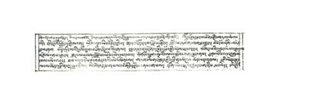Bon, Buddhism and the Coproduction of Religion in early Tibet

This project seeks to research the mutual coproductions of Buddhism and Bon in early Tibet. Broadly speaking, it takes as its subject matter the interactions of Tibetan and imported religious currents up to the 13th centuries. More specifically, it focuses on key topics in early Tibetan tantric religion, and their mutual relations. The project takes as its point of departure that the particular forms tantric Buddhism took in Tibet were substantially shaped by the dynamics of its initial interactions with the indigenous religions of Tibet, and that the particular forms taken by the later Bon religion were substantially shaped the dynamics of its interactions with imported Buddhism.
One key text for this project is the Ka ba nag po ma ngag rtsa ba'i rgyud, a Bon treasure revealed by the great 12th century physician, polymath and gter ston Khu tsha zla 'od, who produced texts for both Buddhism and Bon. Like others of his near contemporaries in the region of Lho brag, most notably the famous rNying ma pa gter ston Guru Chos kyi dbang phyug (1212-1270), Khu tsha was highly proficient in both traditions. The Ka ba nag po ma ngag rtsa ba'i rgyud is believed by Karmay and others to be the first major text of the emergent Bon phur pa tradition, and it is a tour de force of tantric writing that has deservedly become the main scriptural source for all the subsequent Bon phur pa traditions. It is also rich in signs and nuances that yield valuable insights into the dynamics that existed between Bon and Buddhism in Lho brag at that time. In particular, it revives the worship of a great many of Tibet's indigenous deities by including them within the central Phur pa deity's entourage.
Another key text for this project is the rNying ma tantra, the rDo rje phur bu chos thams cad mya ngan las 'das pa. Anathematised by some ultra-orthodox Tibetan polemicists as a false tantra and a forgery, this scripture likewise carries very interesting signs from which we can infer information about the relationships between the two traditions. One of its chapters contains an only barely redacted passage that contains technical terms unique to the Bon Phur pa tradition, technical terms that moreover seem to be unattested elsewhere in rNying ma pa Buddhist texts. Yet nevertheless, this same text remains fundamental even to the Sa skya Phur pa tradition, as well as to the the rNying ma pa.
A third key consideration is the development of the early Padmasambhava tradition. Several of the very earliest Dunhuang texts to mention Padmasambhava by name are smrang texts, the narrative histories required by indigenous Tibetan thinking as the indispensable preliminary adjunct to a related ritual. Astonishingly, these very same smrang still survive, barely changed, under the more modern rubric of rabs. What this indicates is that from very early times, Padmasambhava was incorporated into formal ritual. The nature of the narratives show moreover that several Padmsambhava rituals were of a particular type: rituals to convert indigenous deities into Buddhist ones. From this and from other early sources such as the Dunhuang tantric commentary IOL Tib J 321, where Padmasambhava is portrayed as a transcendent figure and source of tantric scripture, we can see how the single most distinctive ritual practice of Tibetan Buddhism, bla ma'i rnal 'byor, coalesced, in all likelihood around the figure of Padmasambhava in the first instance. No such formal liturgical ritual practices of guru yoga to a named guru have ever been found in Indian Sanskrit sources, showing this most quintessential of Tibetan Tantric practices to be of local origins, an unexpected outcome of the dynamics between imported Buddhism and the indigenous traditions.

